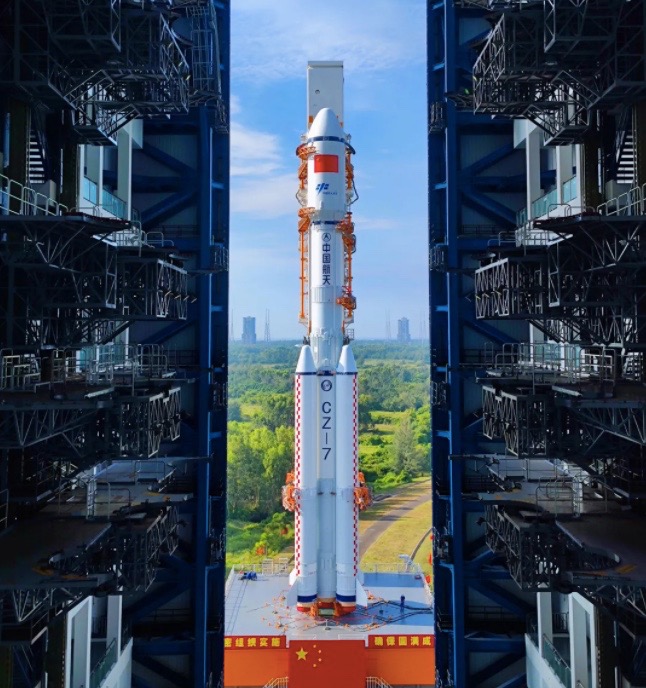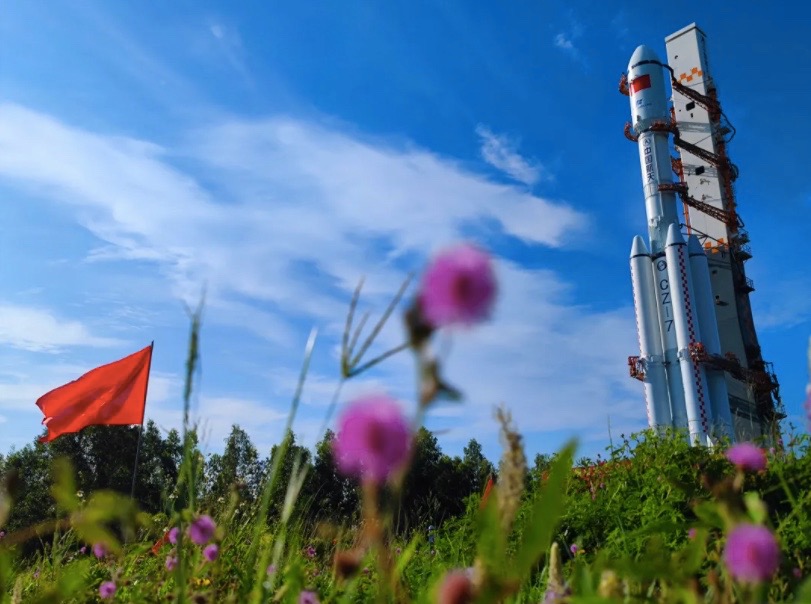China rolls out rocket for Tianzhou 3 cargo mission ahead of Monday launch (photos)

As one high-profile Chinese mission returns to Earth, another prepares to lift off.
A Long March 7 rocket topped with the robotic Tianzhou 3 cargo spacecraft has rolled out to its pad at the Wenchang Satellite Launch Center in Hainan, Chinese space officials announced on Wednesday (Sept. 15).
Tianzhou 3 is expected to launch toward Tianhe ("Harmony of the Heavens"), the core module of China's new space station, on Monday (Sept. 20) or thereabouts, according to the South China Morning Post. Tianhe just hosted the three-person Shenzhou 12 mission, which lived aboard the 54-foot-long (16.6 meters) module for three months.
Related: The latest news about China's space program

The Shenzhou 12 spacecraft departed Tianhe on Wednesday (Sept. 15) and is expected to land in the Gobi Desert early Friday morning (Sept. 17).
Tianzhou 3 is the fourth of 11 missions designed to build China's three-module space station, which is called Tiangong ("Heavenly Palace"). The first of those liftoffs, on April 28, lofted Tianhe. The launch of the robotic Tianzhou 2 supply mission followed on May 29, and Shenzhou 12 got off the ground on June 16.
Tianzhou 3 will bring supplies, equipment and propellant to help get Tianhe ready for its next crewed visit, which is coming up soon. The three-person Shenzhou 13 mission is scheduled to launch toward the module in mid-October for a six-month stay. (Exact target dates are hard to come by for Chinese missions because the nation tends not to announce many details of its spaceflight plans in advance.)
Breaking space news, the latest updates on rocket launches, skywatching events and more!

All 11 launches will be complete, and Tiangong fully assembled, in 2022, if all goes according to plan.
Shenzhou 12's landing will be followed in short order by the touchdown of another crewed spacecraft. SpaceX's all-private Inspiration4 mission, which launched to Earth orbit on Wednesday night (Sept. 15), is scheduled to splash down off the coast of Florida on Saturday (Sept. 18).
Mike Wall is the author of "Out There" (Grand Central Publishing, 2018; illustrated by Karl Tate), a book about the search for alien life. Follow him on Twitter @michaeldwall. Follow us on Twitter @Spacedotcom or Facebook.

Michael Wall is a Senior Space Writer with Space.com and joined the team in 2010. He primarily covers exoplanets, spaceflight and military space, but has been known to dabble in the space art beat. His book about the search for alien life, "Out There," was published on Nov. 13, 2018. Before becoming a science writer, Michael worked as a herpetologist and wildlife biologist. He has a Ph.D. in evolutionary biology from the University of Sydney, Australia, a bachelor's degree from the University of Arizona, and a graduate certificate in science writing from the University of California, Santa Cruz. To find out what his latest project is, you can follow Michael on Twitter.
